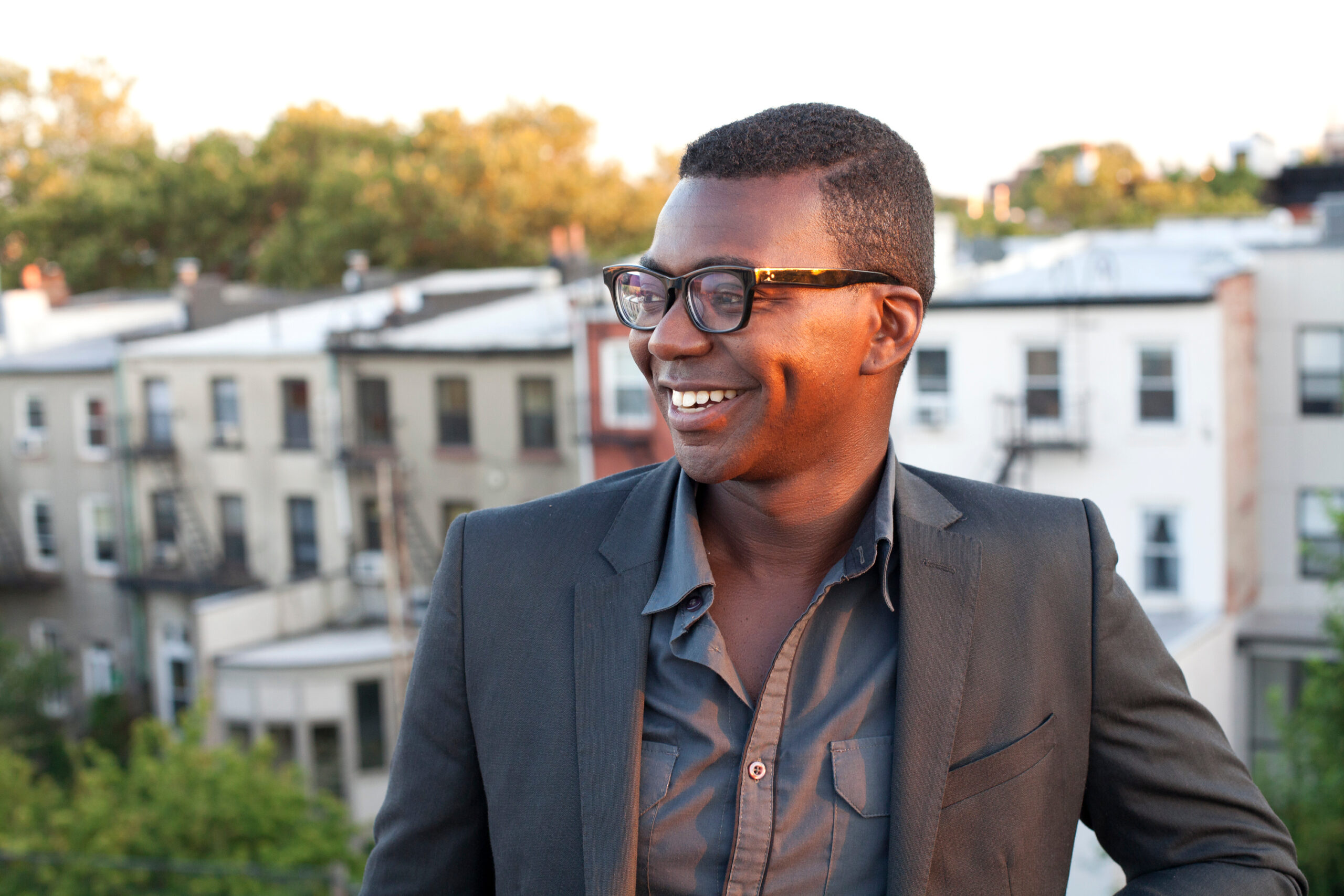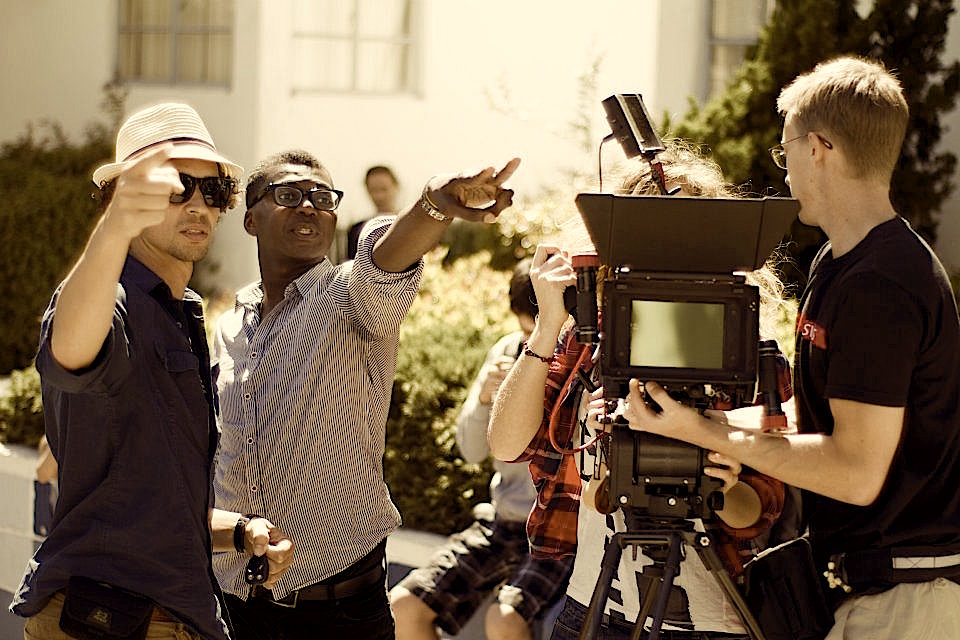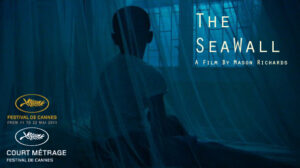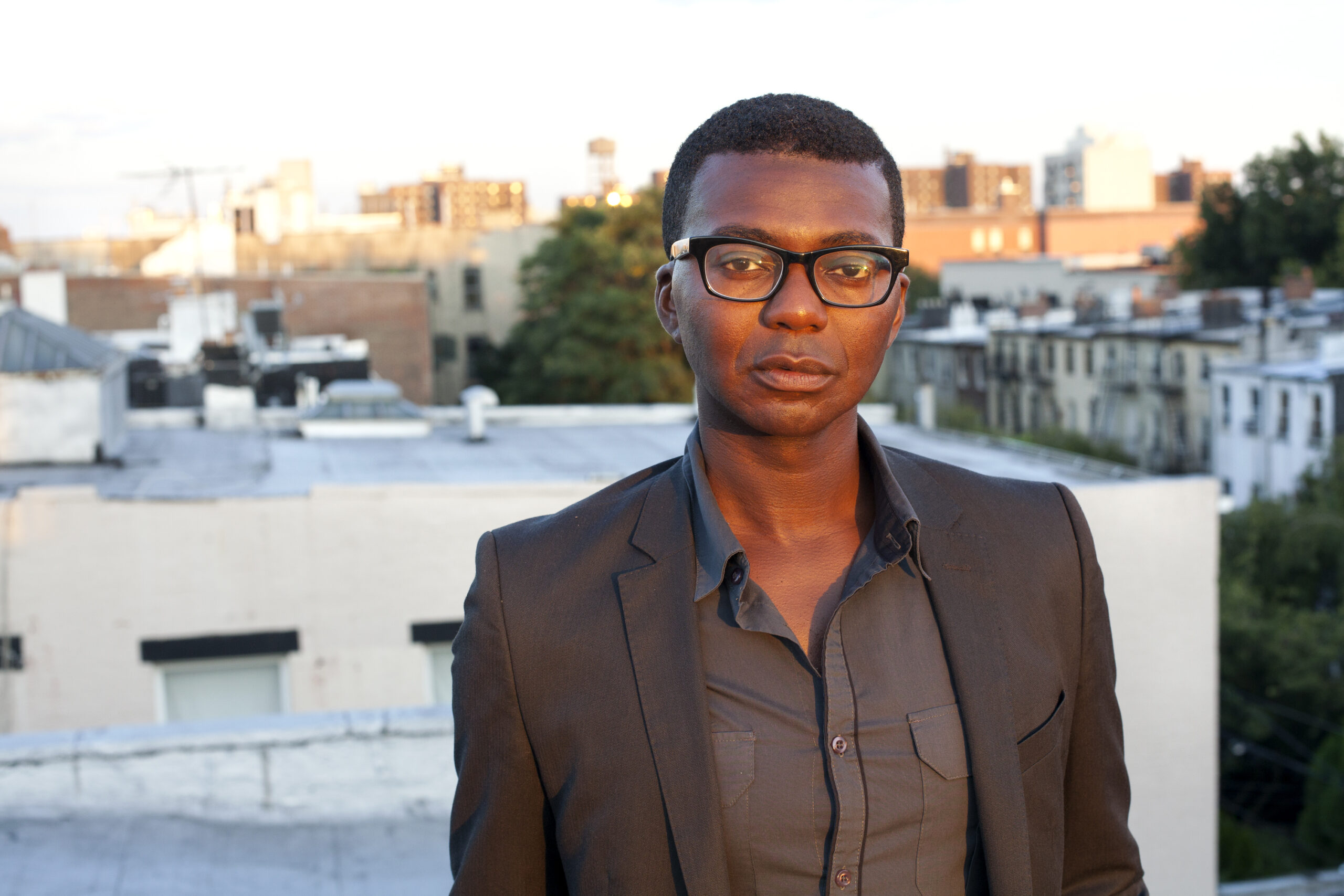NYFA Los Angeles Film Directing Faculty and Chair of Community Outreach Mason Richards wears many hats, both on and off campus — teacher, filmmaker, advocate, artist — and fearlessly explores these complex identities in his own artistic work. Right now, his film “The Seawall” is a part of an installation exploring trans-national identity, Afro-Caribbean culture, and diaspora with the (CCCADI) Caribbean Cultural Center African Diaspora Institute gallery in New York City. If you’re in New York, hurry to see it before Nov. 30!
Born in Guyana, Richards immigrated to the U.S. when he was just seven years old, an experience that inspired him to create and film “The Seawall” back home in Guyana. In the midst of pre-production for the feature version of “The Seawall,” Mr. Richards found the time to catch up with the NYFA blog to share his inspirations and his insights with our international community.

NYFA: First, can you tell us a little bit about your journey and what brought you to NYFA?
MR: I started my career in the arts as a teen actor while growing up in New York City. I was one of the youngest members of a youth theater company called “The CityKids Repertory Company.” We wrote and performed theatrical pieces around social issues such a drug abuse, bullying, racism and identity.
My transition from acting to directing happened around the time I was an undergraduate in college pursuing degrees in English (B.A.) and Human & Organizational Development (B.S.) double-major from Vanderbilt University. I directed my first theater play “For Colored Girls Who Have Considered Suicide/When the Rainbow is Enuf” during my freshman year at Vanderbilt, and I knew from that point on that I wanted to be a director.
Many years later after working in Hollywood at Paramount Pictures in marketing, I decided to return to school to pursue my MFA in Film Directing from Cal Arts (California Institute of the Arts). As far as teaching at NYFA, I’ve always known that I would work as an educator in some capacity. So when I heard about an opportunity to teach filmmaking at The New York Film Academy’s NYC campus I jumped at the chance — mainly because of the diversity of the NYFA student population, as well as NYFA’s “hands on” approach to filmmaking.
I actually started teaching in the high school program at NYFA New York in 2014. Then when I moved to LA full time in 2016, I subsequently took on teaching more advanced filmmaking classes at the NYFA Los Angeles campus, focusing on directing and screenwriting.
NYFA: As NYFA’s Chair of Community Outreach, can you speak to what community means to you and how you’ve seen it grow at NYFA?
MR: In addition to being faculty in the filmmaking department where I teach directing and screenwriting, I am also the Chair of Community Outreach Department. I firmly believe that as artists, filmmakers, and creatives it’s really important to give back to the community in any way we can — and especially now that there is such a push to increase diversity in Hollywood in regards to women and groups that have been traditionally underrepresented. I believe that it is important to live a life with purpose, and part of having purpose is service. So, as Chair of Community Outreach I feel like it give my life more purpose because I am able to be of service to the community.
NYFA: As someone who has worn a lot of hats within the industry (acting, directing, community outreach, and more), how has your vision grown as an artist? Has shifting roles changed how you approach your work as a filmmaker?
MR: Filmmaking is such a collaborative art form, and I believe that it is essential to be aware of all of the various jobs that people have on set. As for me, starting out in the business as a child actor and then moving into directing, I have a unique understanding of the process that actors go through from auditions, to rehearsals, to performance, etc. With that, I have lots of love and empathy for actors, and I always make sure that I’m not only concerned with the technical and cinematic aspects of a project, but also the performances are very important to me. It’s always a part of my vision to elevate the performances of the actors to ensure that they are truthful and relatable to audiences.
NYFA: What inspired your film “The Seawall”?
MR: I was born in Guyana, South America, and like most Guyanese people, I left Guyana at an early age with my family in pursuit of a better life abroad in the United States. As a proud Guyanese citizen and passport holder, every time I return to my home country, I feel somewhat disconnected from the culture. This feeling is unsettling. It usually takes me a few days of listening to the cadence of the rich accents of my Afro- Indo- and Amerindian Guyanese people, in fish markets or liming on the seawall, then I start to feel more connected to the place and the people again. It’s always fascinating to me that Guyana can look and feel foreign to me in many ways, yet the sounds and optics contributes to making it feel very familiar, like “home” at the same time.
NYFA: Can you tell us how your collaboration with the LIMINAL SPACE exhibition at the CCCADI (Caribbean Cultural Center African Diaspora Institute) came about?
MR: I was approached by the art curator, Grace Ali, who had been a champion of “The Seawall” short film. Grace felt like the film would add a nice texture to the exhibit featuring art from various artists of Guyanese descent. I’m just thrilled to be in such great company with some of the more talented painters, photographers and sculptors in the diaspora.
The CCCADI is very deliberate about the art they showcase in their space, so the whole experience is just an honor. Many of us from the Caribbean diaspora, as well as other immigrants to foreign countries, struggle with a concept of “trans-national” identities — meaning that we are from another country; however, we’ve immigrated to the United States, where we’ve adapted to a new, dominant culture and way of life.
With that, there are times when we as immigrants feel a sense of “disconnect” from our present culture while maintaining and sense of nostalgia for our place of birth. For immigrants, this can be a feeling like we have left something behind, back “home,” whether it’s family, our cultural identity, or simply our childhood memories. In my current film installation project, I wish to explore the disconnect between our cultural identity by focusing on the natural elements that connect me to my birth country.
NYFA: Having left Guyana at age 7 for New York, many of our students may be able to relate to your story of immigration. What advice would you give to our students who are in transition between countries, and establishing their identity as artists?
MR: As an artist and filmmaker, my creative and artistic intentions tend to center around themes of identity and belongingness. In my work, I constantly strive to explore questions around “who am I, where do I belong, and what does ‘home’ truly mean?” These questions, I believe are the pillars for a strong sense of self, and ultimately the foundation of character. As immigrants in America it’s important that we tell our stories and share the experiences of our culture. It only takes us one step closer to understanding each other as human beings.
NYFA: You’re now preparing to produce the feature version of “The Seawall” — how has your process changed since producing the short?
MR: For the feature film of “The Seawall” I have expanded the story so that the main character Malachi is now an adult struggling with becoming a new father and going back home to his country of birth. The process has been more intense than producing the short because it’s a longer format, but also because I’ve had to do a lot more research and development of the characters to make sure that they are telling their own truth. I’m excited because I have a great producing team to help me along.
NYFA: What advice can you offer to our students who dream of making their own feature film?
MR: The film industry is very tough, so in order to be successful, you have to be resilient and have faith in your dreams.
NYFA: Are there any other upcoming projects you’d like to tell us about?
MR: I’m developing a television pilot about a Caribbean family adjusting to life in NYC.
The New York Film Academy would like to thank Mason Richards for sharing a part of his story with our community. “The Seawall” Short film will be playing at the CCCADI until Nov. 30 2017. To view the film online via Anansi Studios, click here. Visit the New York City exhibit at the Caribbean Cultural Center African Diaspora Institute, 120 E. 125th Street.


